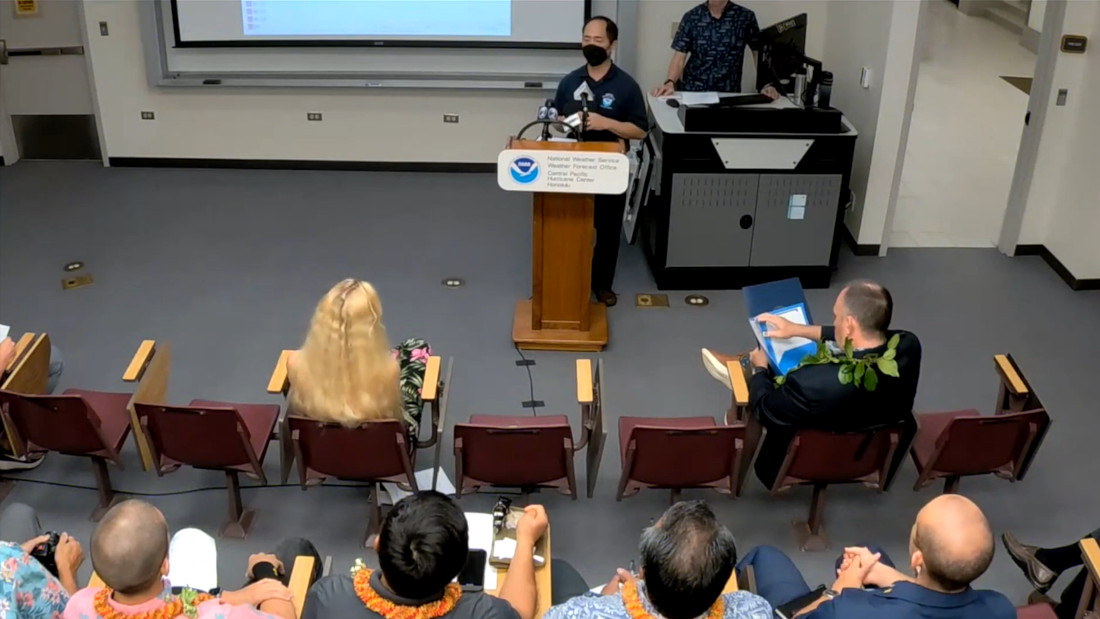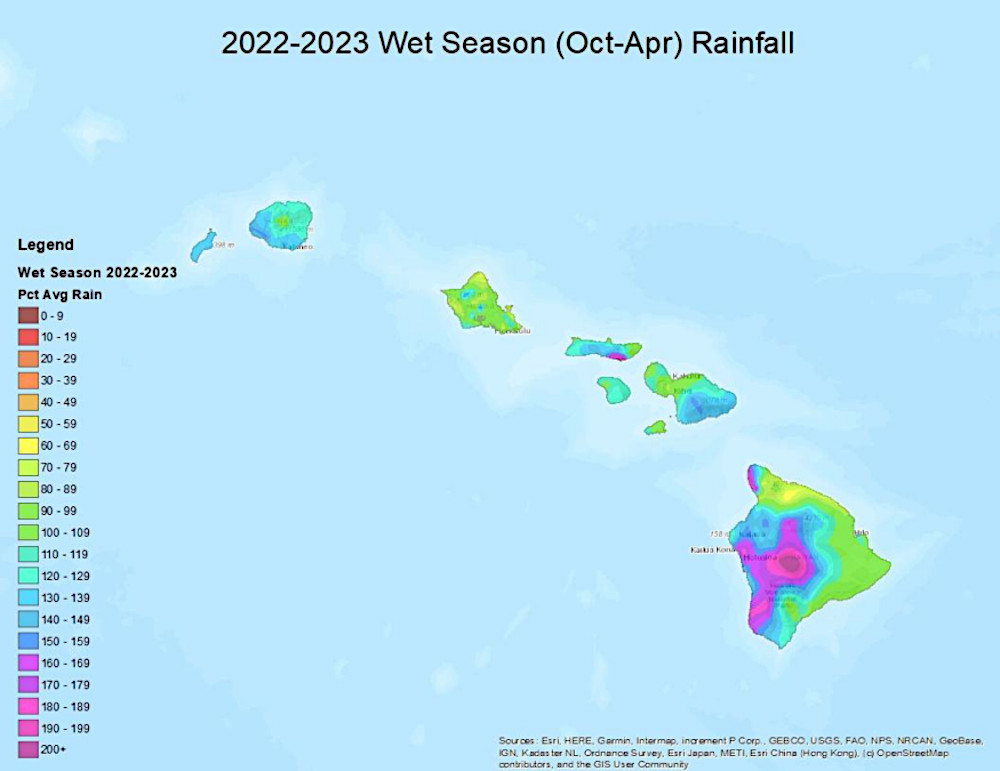This story appears in the above BIVN Update. The video will jump to the associated story when played. (A synthesized voice was utilized in the narration for this story)
(BIVN) – Below average rainfall is expected through the Hawaiʻi dry season, which runs from May through September, and severe drought is possible, especially along the leeward areas of Hawaiʻi island.
The NOAA Climate Prediction Center forecast was unveiled during a news conference on Thursday, which coincided with the release of the 2023 central Pacific hurricane season outlook.
Forecasters say “probabilities strongly favor El Niño development during the summer”, and the warming pattern in the Pacific is expected to persist into 2024.
“Below average dry season precipitation is not typical for the summer months of an El Niño onset year,” the forecasters noted, but it has happened in the past; as recently as 2009, which was the 9th driest dry season in 30 years.
Severe drought (D2 category), and possibly extreme drought (D3 category), is expected to develop by the end of the dry season, the forecasters said. “Impacts are expected to be the worst for non-irrigated agriculture, water systems dependent on surface water diversions,” as well as “residents relying on rainfall catchment” like those living in Puna, noted Kevin Kodama, Senior Service Hydrologist with the National Weather Service.
Leeward areas could also face significant wildfire risk, later than the normal late-July to early-August time frame, as fuels from wet season growth will be abundant.
The National Weather Service presentation also included a summary of the wet season, which produced near-to-above average rainfall at most locations across the State of Hawaiʻi.
On Hawaiʻi island, most windward totals were 80% to 120% of seasonal average, although most of Kohala and Hāmākua saw only 60 to 80% of the average.
The remainder of the Big Island recorded rain totals up to 130 to 170% of the average. Hilo Airport saw 87.29 inches of rain, the 11th wettest season in the last 30 years.



by Big Island Video News5:32 pm
on at
STORY SUMMARY
HONOLULU - The NOAA Climate Prediction Center gave its outlook for May through September 2023, with an El Niño pattern expected to develop during the summer.